1980s heavy metal explosion: a guide to sub-genres
Death, thrash, speed, hair, grindcore and many more!
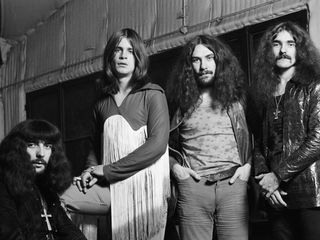
Intro
In the 1970s, heavy metal meant Black Sabbath and bands who sounded like Sabbath.
In the 1980s, things got… a little more complicated. As part of our Metal Week celebrations, MusicRadar documents the fragmented sub-genres thrown up by the metal explosion in the 1980s. First, some scene-setting…
When The Kinks cranked up the distortion on You Really Got Me in 1964, they lit the touch paper for a genre that would be forever characterised by loudness.
By the early '70s Led Zeppelin and Black Sabbath had taken the dirty guitar sounds of late '60s pop, added some blues and made it even heavier. But it was the New Wave Of British Heavy Metal Bands – Motörhead, Judas Priest, Iron Maiden - who would push metal to an explosive pinnacle by the turn of the '80s.
These British bands inspired a whole generation of artists like Metallica, Slayer and Anthrax to turn metal’s guitars up and push the tempo to the upper limits of sanity.
By the mid '80s, metal was enjoying its heyday on both sides of the Atlantic. But under the mounting pressure to innovate and grab the attention of an increasingly desensitised fanbase, it shattered into countless, sometimes bizarre, sub-genres.
From speed metal to Christian metal, we pick up the pieces of the 1980s heavy metal explosion…

Speed metal
Synopsis
Faster, tighter and more abrasive than traditional heavy metal, speed metal was inspired by the New Wave Of British Heavy Metal Bands and pioneered by the likes of Metallica and Anthrax in the USA.
Speed metal maintained the volume and distortion of '70s heavy metal but took on the emphatic rhythms of hardcore and punk. Key to the speed metal sound is a high level of technical skill, allowing for some seriously punishing riffage. Fancy yourself as a speed-metaller? Make sure you can downpick at 230bpm!
Speed metal rapidly became virtually indistinguishable from thrash, which saw a (slight) softening of the rules on tempo and swing, but no such let-up when it came to volume and precision.
Key band: Motörhead
The band that put the speed into speed metal. Rapid-fire bass and blazing guitars made Motörhead an influence to thousands of speed metal musicians from the late '70s right through to the present day.
Key album: Anthrax - Among the Living (1987)
Socially aware, dark and ferociously fast, Among The Living is everything speed metal should be.
Key track: Exodus - A Lesson In Violence (1985)
More like a lesson in shredding from guitarist Gary Holt.
Further reading
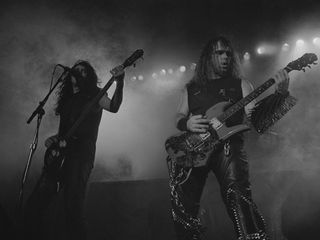
Thrash metal
Synopsis
The natural evolution of speed metal, thrash ramped up the aggro. The biggest acts in thrash are known as the 'Big Four': Metallica, Megadeth, Anthrax and Slayer.
Not sure if you’re listening to thrash? Listen out for the double kickdrum and palm-muted rhythm guitars.
As a sub-genre, thrash has stood the test of time and many its biggest names are still touring. It also influenced death metal, black metal and power metal.
Key band: Metallica
Metallica pushed the upper limits of speed and volume but kept technical ability, musicianship and melody at the heart of their complex songs, before jumping ship and joining the hard rock mainstream in 1991.
Key album: Slayer - Reign In Blood (1986)
Reign In Blood is a strong contender for the title of 'heaviest album of all time'. Play it loud and understand what thrash is all about.
Key track: Metallica - Fight Fire With Fire (1984)
A masterclass in thrash rhythm guitar from James Hetfield.
Further reading
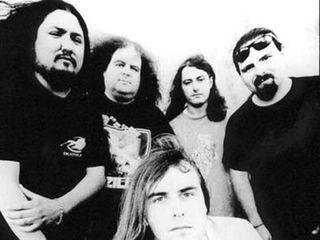
Grindcore
Synopsis
Evolving from thrash, speed metal and hardcore punk, grindcore took the abrasive elements of metal to their uncomfortable extremes. Typically, grindcore rejects melody in favour of raw power and explosive blasts of guitar, bass and drums.
Though the British bands stole the limelight, notably Ipswich’s own Napalm Death, two of the most legendary and influential bands, Repulsion and Terrorizer, came from the US. Napalm Death's 1987 debut album, Scum, was a merciless assault of sonic experimentation that laid the foundations for other grindcore acts such as Carcass and Brutal Truth.
Grindcore’s uncompromising approach to uncomfortable music has inspired a swathe of experimental noise artists and even spawned its own sub-genres.
Key band: Napalm Death
It’s generally agreed that Repulsion’s first album (and 1985 demo) were the first proper grindcore recordings, but Napalm Death were the band that named and popularised the genre.
Key album: Napalm Death - From Enslavement To Obliteration (1988)
Check out the extreme vocals from Lee Dorian, who oscillates wildly between guttural grunts and high-pitched shrieks.
Key track: Carcass - Vomited Anal Tract (1988)
Grindcore at its shriek-along best.
Further reading
Keep The Grindcore Alive
Invisible Oranges
Choosing Death - a whole book about grindcore and death metal
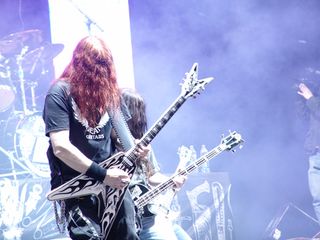
Death metal
Synopsis
Proof, if proof were needed, that metal seeks out extremes, death metal took on the dark lyrical themes of thrash and dragged them even further into the shadows.
Musically, death metal is as likely to hop on a screaming thrash riff as it is to use a bone-crushingly slow Black Sabbath bassline. It’s also noted for taking the complex song structures from '70s prog and the more experimental side of thrash.
Lyrically death metal is preoccupied with, well, death. However it’s not about suicide and devil worship as tends to be the case with black metal.
Key band: Death
Death by name, death by nature. Death were the forerunners of the scene and pioneered the dark subject matter and growling vocals that would define the sub-genre.
Key album: Carcass - Heartwork (1993)
Moving on from their grindcore beginnings, Heartwork shows how prog-influenced and melodic death could be.
Key track: Morbid Angel - Rapture (1993)
This track is as death as it gets, boasting manic guitars and mystical lyrics with more than a hint of bloody murder.
Further reading
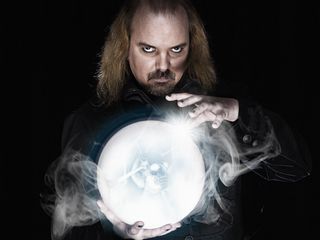
Doom metal
Synopsis
Where thrash was about chops, doom was predominantly about atmosphere. Avoiding the staccato crispness of technically-driven thrash metal, doom favoured enormous, lumbering basslines and almost operatic vocals creating an all-consuming air of menace.
Doom most notably owes its style to Black Sabbath, who influenced doom bands on both sides of the Atlantic to detune their guitars and play slow, grizzly basslines.
Doom took off in the late '80s before splintering into numerous niche genres in the early '90s: sludge doom, stoner doom and death doom, to name but a few.
Key band: Candlemass
Sweden’s most important contribution to doom metal pushed power chords and big bass on mid-'80s metallers.
Key album: Paradise Lost - Gothic (1991)
This vital band pushed doom to its limits with dark atmospherics and a more orchestral feel than its contemporaries.
Key track: Black Sabbath - Black Sabbath
The track that inspired it all. Go straight to the source for creepy atmosphere and power chords.
Further reading
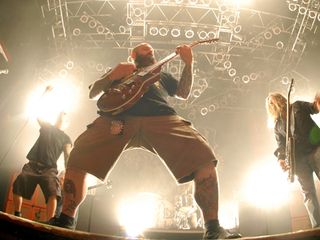
Sludge metal
Synopsis
A meeting of doom metal, hardcore and grunge, sludge was almost exclusively the preserve of New Orleans metallers in the late '80s and early '90s.
Musically it can be similar to doom, with detuned gurgling basslines. However, sludge is prone to suddenly shift tempo and is usually more abrasive than its lumbering cousin. Sludge vocals are often screamed or sung, owing more to early grunge acts than the spooky doom-mongers.
Key band: Down
Down were formed while Pantera was on a break between Far Beyond Driven and The Great Southern Trendkill. Their popularity pushed sludge across the States and beyond.
Key album: Crowbar - Crowbar (1993)
Produced by Phil Anselmo of Pantera and Down, Crowbar’s second album plucked them from obscurity and got sludge metal on MTV.
Key track: Eyehategod - Dixie Whiskey (1996)
If you like your metal with a touch of blasphemy, Eyehategod are the sludgers to go to first.
Further reading
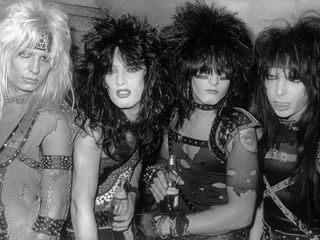
Hair metal
Synopsis
As the name suggests, for these bands, style came first and metal took a back seat. These were the makeup-clad, glam-inspired musicians who capitalised on metal’s cool with killer pop hooks that caught the imagination of the mainstream.
Key players in the battle of the bouffants were the likes of Mötley Crüe, Poison and Cinderella, along with older bands like Whitesnake and Def Leppard who hairsprayed up for the mid 1980s. The sub-genre was characterised by flamboyant live shows and easy-on-the-ear tunes with plenty of distortion and chorus on those guitar solos.
Hair metal was in its prime on LA's Sunset Strip in the late '80s but was dealt a knock-out blow by the arrival of grunge in the early 1990s.
Key band: Mötley Crüe
The baddest boys at any party, Mötley Crüe's history is the ultimate sex, drugs and rock 'n' roll soap opera.
Key album: Poison - Open Up And Say… Ahh! (1988)
Poison’s second album harnessed stadium-sized glam-metal sounds and sold over 8 million copies.
Key song: Def Leppard - Pour Some Sugar On Me (1987)
All of the swagger and sexy-talk that made hair metal so appealing with a pop riff to get your blood pumping.
Further reading
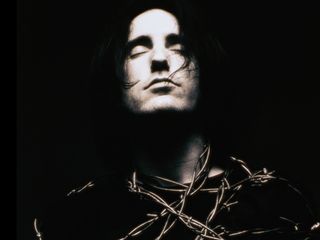
Industrial metal
Synopsis
Like standard industrial music, industrial metal incorporates samples, synthesizers and experimental electronic effects to create richly layered sonic atmospheres. Unlike standard industrial music, however, industrial metal combines these elements with pounding - often heavily treated - guitar parts.
Ministry’s blend of industrial dance music with high-octane aggression and heavy metal guitars kick-started the industrial metal sub-genre in 1988. However, it was Trent Reznor of Nine Inch Nails whose perfectionist technical noodling enabled industrial metal to crossover into the mainstream in the early '90s.
Reznor spawned leagues of copycats and through his success industrial elements crept into other metal sub-genres – such as industrial thrash and industrial black metal.
Key band: Nine Inch Nails
In the early '90s, Trent Reznor took industrial metal to dizzying crossover success and even became a sex symbol.
Key album: Ministry - Land Of Rape And Honey (1988)
Ministry’s third album is packed with aggressive guitars and technical glitches that acted as a blueprint for industrial metal.
Key track: Rammstein - Du Hast (1997)
Industrial metal at its Teutonic best. Big synthesisers, huge drums and tightly compressed guitar riffs - it’s all here.
Further reading
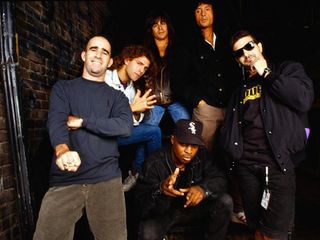
Rap metal
Synopsis
Metal and hip-hop have a shared sense of bravado and machismo, so it should have been obvious to all that a fusion of the two genres was inevitable.
Early attempts at rap metal include Beastie Boys’ Licensed To Ill and Aerosmith vs Run DMC with Walk This Way, but despite these obvious successes it took another decade for the sub-genre to find its feet.
In the early '90s rap metal was characterised by heavy, bass-driven tunes without a clear emphasis on melody. But when metal adopted hip-hop’s flair for basslines and funky beats it burst into the mainstream, inspiring the briefly ubiquitous nu metal.
Key band: Rage Against The Machine
Zack de le Rocha's politicised rhymes underpinned by Morello's huge riffs and turntable-influenced sonics made for one of the finest debut albums of all time. A killer rhythm section too.
Key album: Beastie Boys - Licensed To Ill (1986)
The Led Zeppelin and Black Sabbath samples on Licensed To Ill point to Beastie Boys’ prior incarnation as a punk band and reveal how seamlessly hip-hop and metal can bond.
Key track: Anthrax - Bring the Noise (1987)
Early adopters of the rap metal sub-genre, Anthrax not only covered a Public Enemy song but drafted in Chuck D and Flava Flav to help out.
Further reading

Christian metal
Synopsis
What with its dabbling in Satanic imagery and death, you could be forgiven for thinking that most metal was for atheists (or hell-bound heathens) - but why should the devil get all the best tunes?
God-fearing Christian metal generally isn’t as heavy, opting for the sort of melodic stadium-filling riffs associated with arena rock and hair metal. And lyrically, as you might guess, there’s much less blood than elsewhere in metal - and a lot more God.
Christian metal broke through in the '80s with Stryper blazing the trail. However, it has remained consistently popular and has populated a number of its own sub-genres, including ‘unblack’ metal, a response to black metal, the darkest of all metal.
Key band: Stryper
They kick-started the Christian metal movement and sound a lot like Van Halen and Poison, but with a more 'positive' message.
Key album: Stryper - To Hell With The Devil (1986)
Managing to mention hell and the devil in an album title while sticking to the path of the righteous is rather clever.
Key track: White Cross - Because Of Jesus (1988)
Listen to that shredding - there’s no doubt that this is metal but this is one tune that isn’t going to the Devil.
Further reading
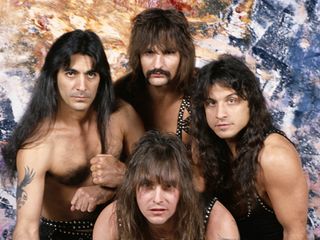
Power metal
Synopsis
Power metal can be seen as a pure metal revival that took place in the late '80s and early '90s. It drew inspiration from the New Wave Of British Heavy Metal bands, such as Iron Maiden and Judas Priest, to re-inject the classic technical ability and melody into heavy metal.
Bored by the formlessness of death metal, in the early '90s, power metallers returned to the drilling basslines and power-chords of the early '80s. For the most part, they also abandoned the grunting and squealing vocal style favoured by contemporary metal sub-genres.
Key band: Helloween
Helloween pioneered the power metal scene in the late '80s with pummeling power chords and double-harmony guitars.
Key album: Hammerfall - Glory To The Brave (1997)
Every track here is an anthem about honour and glory - this is power metal as it’s meant to be.
Key track: Manowar - Kings Of Metal (1994)
According to the Guinness Book Of Records no one is louder is than Manowar, and that’s enough to make this track a power metal anthem.
Further reading
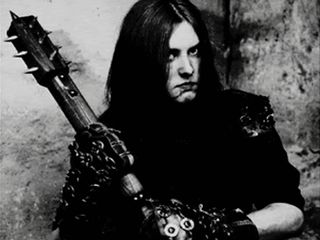
Black metal
Synopsis
Easily the darkest of all metal sub-genres, black metal grew out of many of the same roots as death metal, influenced by bands like Venom, Hellhammer and Celtic Frost, and taking the obsession with death and the occult to a whole new level.
Black metal is less rhythmically rigid than thrash. It also strays away from verse/chorus/verse structures in favour of less predictable terrain. What sets it apart from other metal sub-genres is that it often embraces raw, lo-fidelity production values.
Following a spate of Norwegian church burnings in the early '90s, black metal became infamous, but the scene is very much alive and kicking - there are probably more black metal bands now than ever!
Key band: Mayhem
Pioneers of the Norwegian black metal scene, Mayhem have been surrounded by controversy and death since they started in the mid-'80s.
Key album: Darkthrone - Transylvannian Hunger (1994)
Ice cold minimalism and lo-fi simplicity characterise this milestone black metal album.
Key track: Burzum - War (1995)
Burzum is one of the most controversial figures in black metal and this heart-pounding track is a sound introduction to the sub-genre. Tread carefully.
Further reading
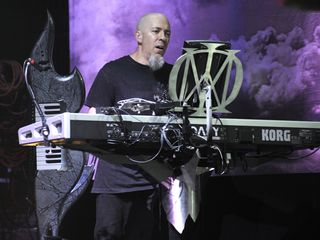
Progressive metal
Synopsis
While Metallica had vaguely progressive leanings in the '80s, it wasn’t until the early '90s that there was an explosion of genuine progressive metal bands.
Progressive metal blends the power of metal with the musical ambition and tireless noodling of prog. It combines intricate riffs, complex structures and shifting time signatures to create sprawling behemoths of metal.
Dream Theater’s second album, Images And Words, was a landmark release for the sub-genre and signalled the pinnacle of prog metal popularity. However, a renewed interest in prog and noise suggests there could be a resurgence in prog metal right now. Make it so.
Key band: Queensrÿche
Taking their guitar sound from KISS and their structures from Pink Floyd, Queensryche paved the way for prog metal in the late '80s.
Key album: Dream Theater - Images and Words (1992)
High-level musicianship, big drums and complex song structures made this a benchmark progressive metal album.
Key track: Dream Theater - A Change Of Seasons (1995)
Prepare for 10 minutes of epic guitar churning, logic-defying genius.
Further reading
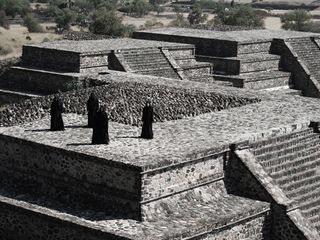
Where next for metal?
Conclusion
When metal shattered and splintered in the furnace of the early '80s, it crystalisedinto a few niche sub-genres. Over the last 25 years, these scenes have grown-up, transformed and split, creating countless new metal-infused styles.
'80s metal showed that it was versatile enough to mix with prog, hip-hop and pop, and appealing enough to get under the skin of Christians and devil worshipers alike.
And metal’s still changing and making its presence felt.
The 1990s saw the rise of everything from funk metal to metalcore to viking metal whilst the recent acceptance of drone and noise by the hipster indie scene is changing the make-up of metal crowds as we type.
Metal’s broad and relentless influence on contemporary music as well as its mercurial ability to slip between genres and find a home in all of them proves that it's here to stay.
So where next for metal? From the genres we've covered and the countless ones we haven't, only one thing's for sure - metal's going wherever the hell it likes!
Liked this? Now read: The 50 Greatest Heavy Metal Albums Of All Time or Tom Morello's 13 greatest heavy metal albums of all time
Connect with MusicRadar: via Twitter, Facebook and YouTube
Get MusicRadar straight to your inbox: Sign up for the free weekly newsletter
Most Popular






